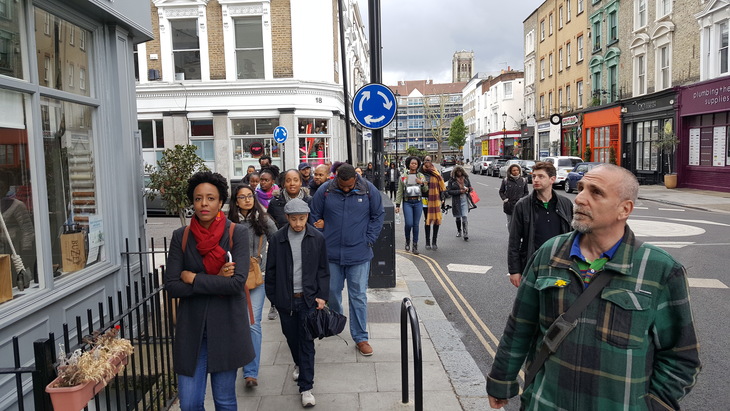A series on some of London's best walking tours. This time, we speak to Dawn Marine from Black History Walks.

Tell us about Black History Walks
The walks give people a basic outline of the Black history in the streets, buildings, and architecture across the capital. They last about two hours and topics include: ancient African history, Black heroes of world war two, gentrification, Windrush, finance, empire, literature, art and politics.

Where do they take place?
There are 12 to choose from; Hackney, Notting Hill, Trafalgar Square, Brixton, Clapham Common, St Pauls/Bank, Mayfair, Soho, Southbank, Elephant & Castle, Bankside and Docklands. There are also indoor walks within the National Gallery and Wallace Collection. Periodically we run three-hour guided bus tours around central London.

Tell us something surprising you learn on a Black History Walk?
How far back the African presence goes; the amount of wealth generated from Africa and the Caribbean that is evidenced in London's infrastructure, the Black British Civil Rights story.

Who are some of the historical heroes and heroines?
Ivan Van Sertima who wrote the book They Came Before Columbus, which details West Africans who sailed across the Atlantic long before Columbus. Walter Rodney, the Guyanese academic who wrote How Europe Underdeveloped Africa, a pioneering text that inspired and educated revolutionary groups like the Black Panthers and Nelson Mandela's ANC. Phyllis Wheatley, the first black woman to publish a book in London (1773) and Una Marson, the first black woman to have her own show on the BBC, in 1942.

If you had to choose one stop on any walk, what is it?
Dr Harold Moody and the League of Coloured People's plaque outside the YMCA in Great Russell Street. Dr Moody set up the League in 1931. It was a Black British Civil Rights group that fought for equality in housing, education, employment, nursing, and the military. He called for anti-racist legislation in the 1930s and his actions eventually resulted in the 1965 Race Relations Act which was the first ever law against racism, and laid the foundation for subsequent legal actions up to and beyond Stephen Lawrence inquiry.

What's your favourite thing about doing these London walks?
Giving people back the history that was stolen from them.
You offer cruises too — what happens on these?
On the three-hour Black history river cruise our double decker boat goes from Embankment, to Vauxhall, to Greenwich. On the way we give a commentary of all of the African and Caribbean history in, and on either side of, the river. We also have several actors on board dressed in historical costumes. They portray famous Black people like Queen Amanirenas, General Yaa Asantewa, and Nanny of the Maroons — and speak on their achievements.

What do people come away with at the end of a Black History Walk?
Education, inspiration, and upliftment. We also run about 150 online talks each year and monthly Black films at the BFI Southbank.

Explore and book tours on the Black History Walks website.
Black History Walks in London Volume 1 is released in October 2021, featuring 400 photos and 25 maps. It's published by Jacaranda Books, a unique publishing company run by Black women.



